Abstract
Systemic sclerosis is characterised by vascular endothelial damage. Platelets adhering to the exposed subendothelium may contribute to the inflammatory changes found in the vessel wall. Increased in vitro platelet aggregability in systemic sclerosis has been reported. In vitro platelet aggregation of platelet rich plasma obtained from patients with systemic sclerosis (CREST (calcinosis, Raynaud's phenomenon oesophageal dysmotility, sclerodactyly, telangiectasia) variant) and from controls matched for age and sex was compared. Collagen, ADP, and platelet activating factor were used as aggregating agents. The actions of a platelet activating factor antagonist, BN52063, were also examined. Each agonist caused dose dependent platelet aggregation; there was no difference in either rate of primary aggregation or maximum percentage aggregation between platelets derived from patients with systemic sclerosis and from the control group (analysis of variance). BN52063 was shown to be a dose dependent, competitive antagonist of platelet aggregation induced by platelet activating factor; there was no difference in its action on platelets derived from patients with systemic sclerosis or controls. These results do not support the hypothesis that platelets from patients with systemic sclerosis are hyperactive and may explain the disappointing results obtained with antiplatelet drugs in systemic sclerosis.
Full text
PDF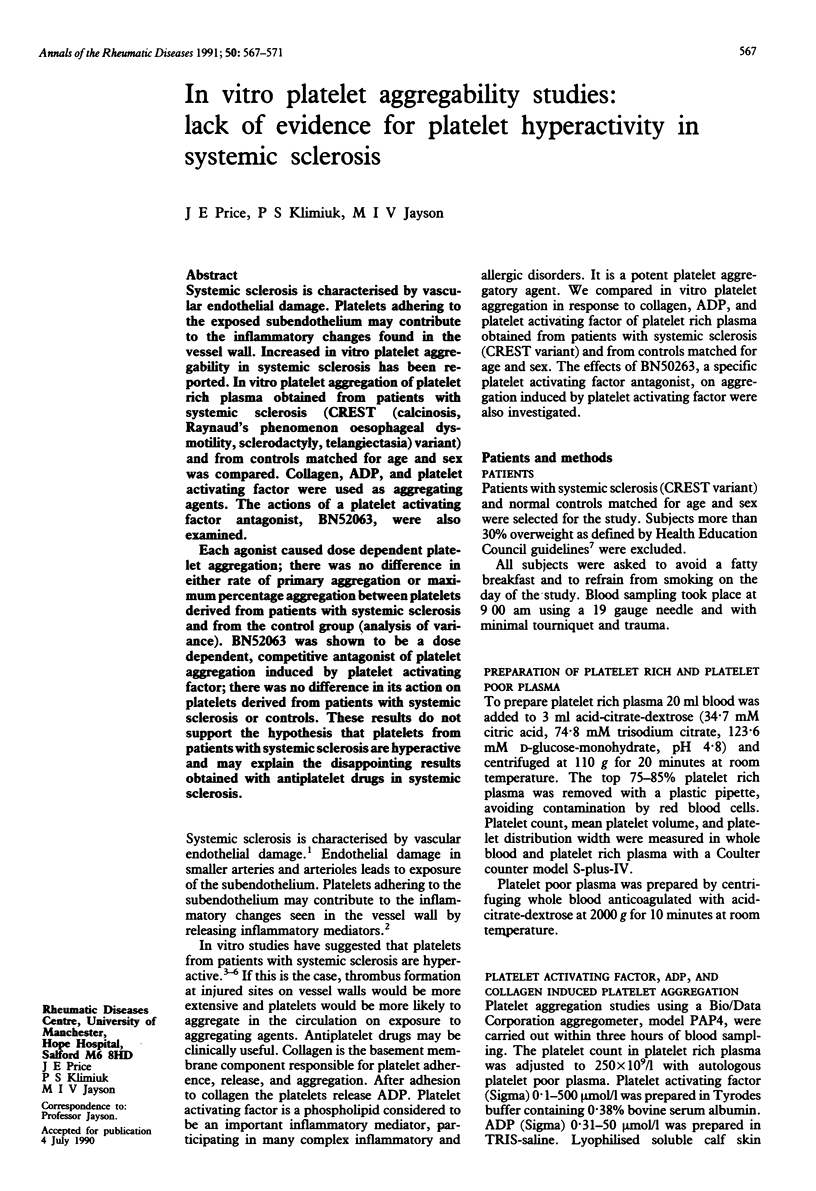
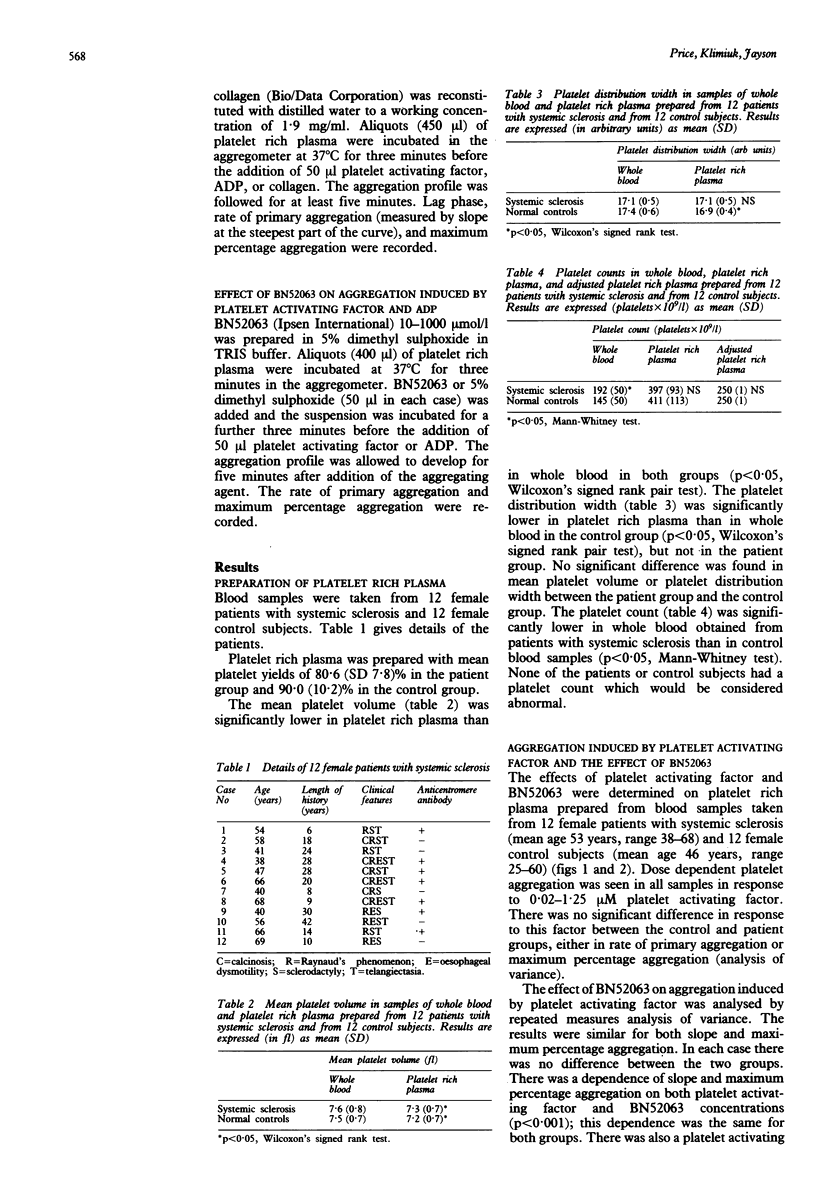
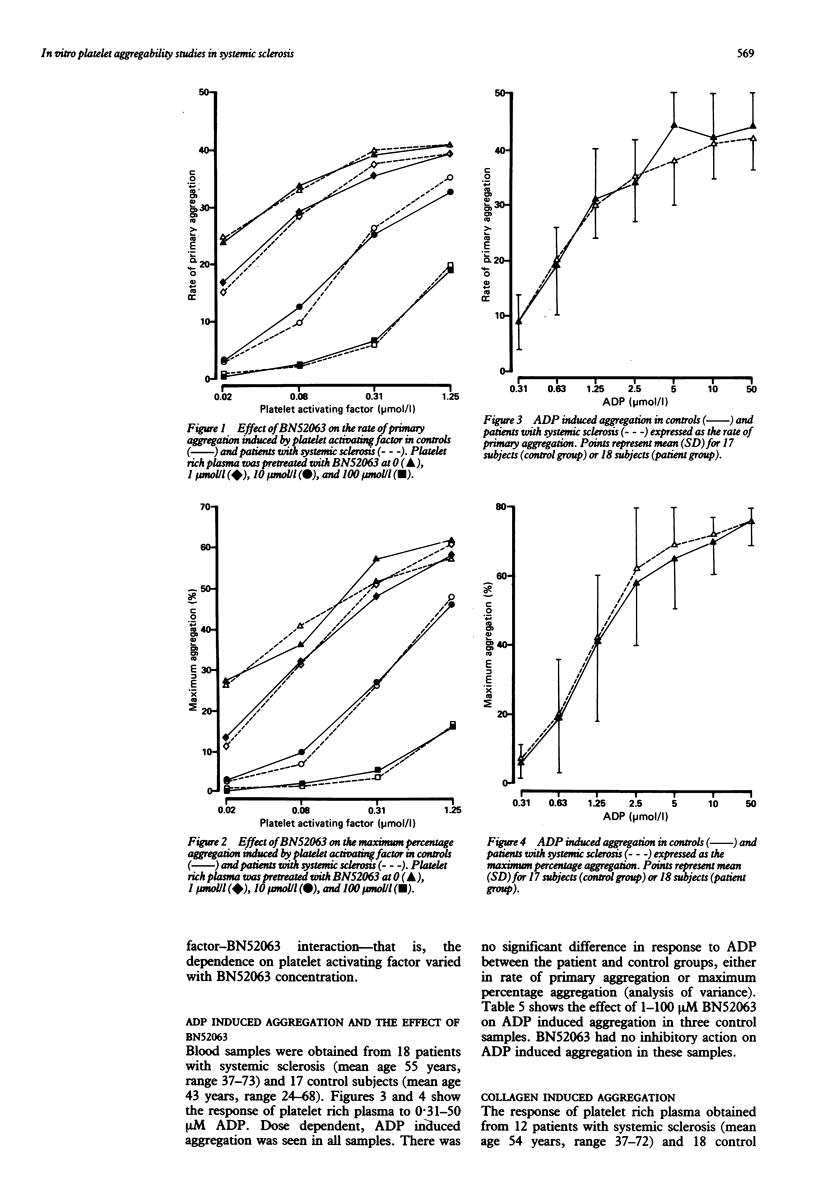
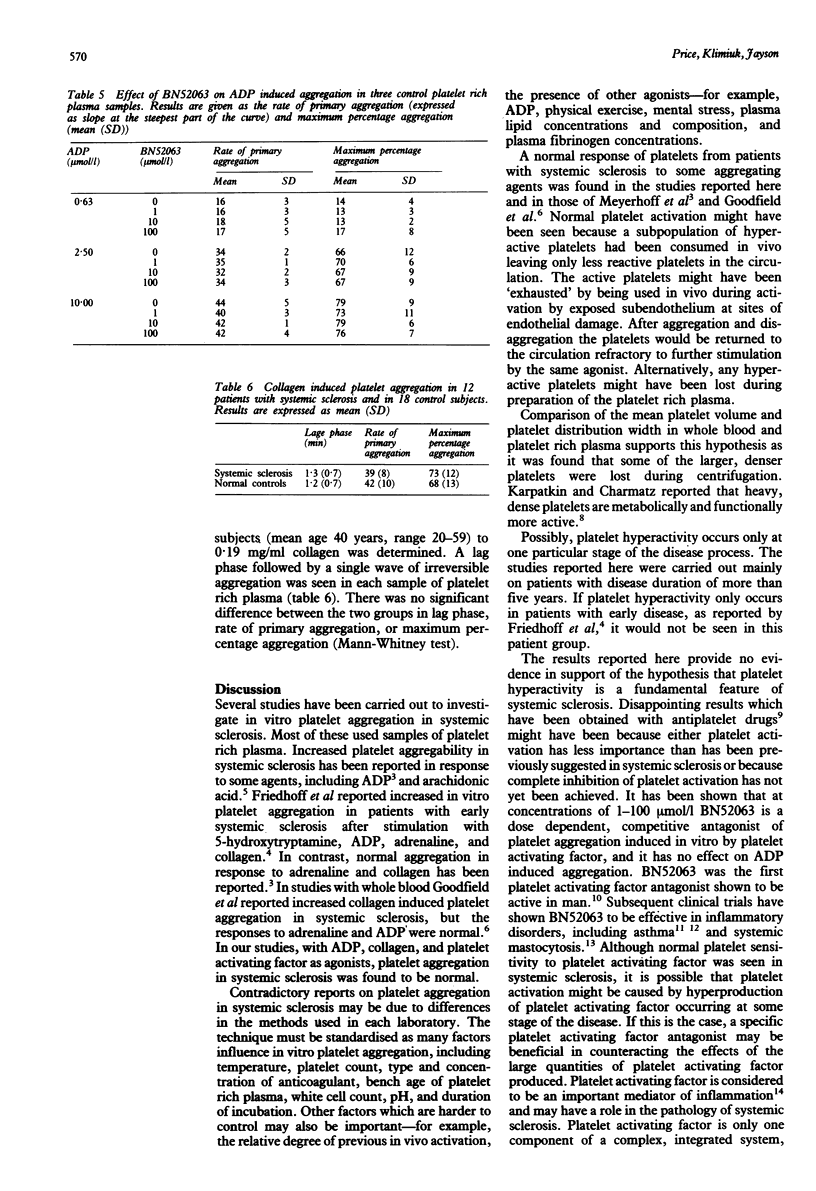
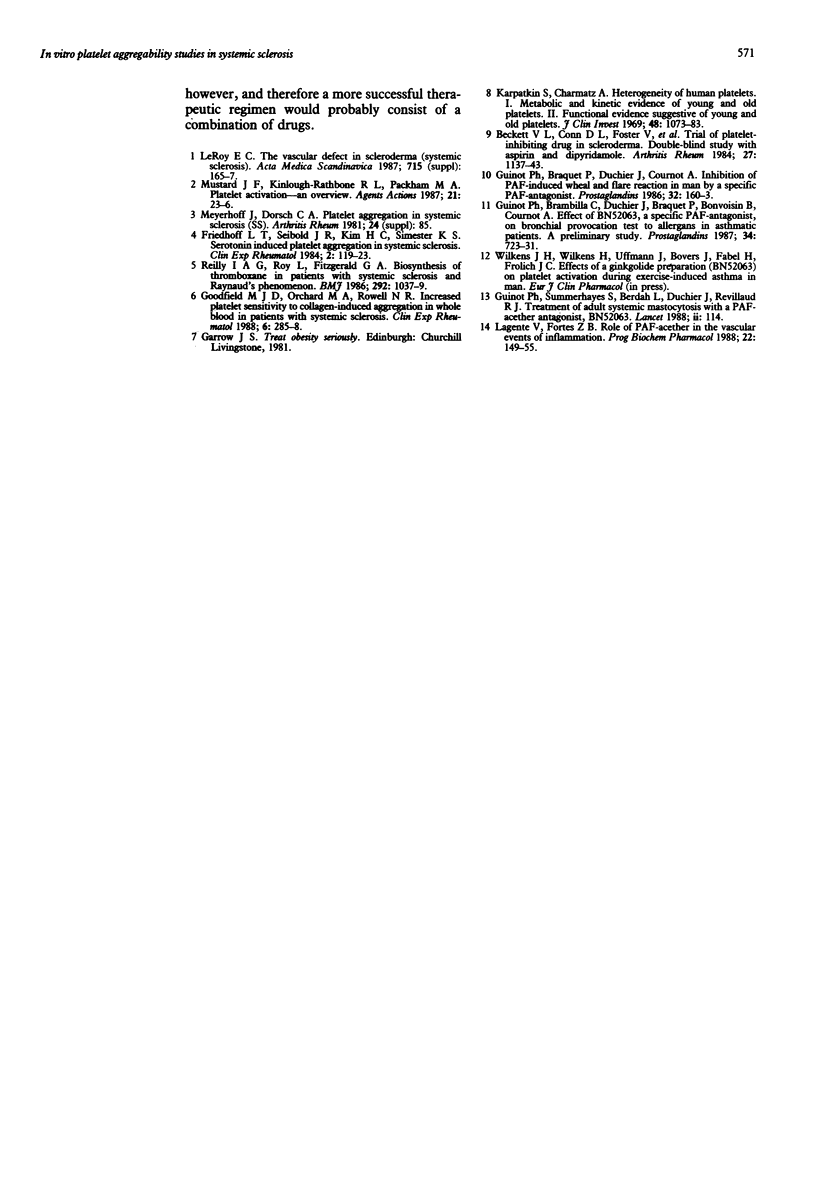
Selected References
These references are in PubMed. This may not be the complete list of references from this article.
- Beckett V. L., Conn D. L., Fuster V., Osmundson P. J., Strong C. G., Chao E. Y., Chesebro J. H., O'Fallon W. M. Trial of platelet-inhibiting drug in scleroderma. Double-blind study with dipyridamole and aspirin. Arthritis Rheum. 1984 Oct;27(10):1137–1143. doi: 10.1002/art.1780271009. [DOI] [PubMed] [Google Scholar]
- Goodfield M. J., Orchard M. A., Rowell N. R. Increased platelet sensitivity to collagen-induced aggregation in whole blood patients with systemic sclerosis. Clin Exp Rheumatol. 1988 Jul-Sep;6(3):285–288. [PubMed] [Google Scholar]
- Guinot P., Brambilla C., Duchier J., Braquet P., Bonvoisin B., Cournot A. Effect of BN 52063, a specific PAF-acether antagonist, on bronchial provocation test to allergens in asthmatic patients. A preliminary study. Prostaglandins. 1987 Nov;34(5):723–731. doi: 10.1016/0090-6980(87)90295-4. [DOI] [PubMed] [Google Scholar]
- Guinot P., Braquet P., Duchier J., Cournot A. Inhibition of PAF-acether induced weal and flare reaction in man by a specific PAF antagonist. Prostaglandins. 1986 Jul;32(1):160–163. doi: 10.1016/0090-6980(86)90161-9. [DOI] [PubMed] [Google Scholar]
- Guinot P., Summerhayes C., Berdah L., Duchier J., Revillaud R. J. Treatment of adult systemic mastocytosis with a PAF-acether antagonist BN52063. Lancet. 1988 Jul 9;2(8602):114–114. doi: 10.1016/s0140-6736(88)90055-4. [DOI] [PubMed] [Google Scholar]
- Lagente V., Fortes Z. B. Role of PAF-acether in the vascular events of inflammation. Prog Biochem Pharmacol. 1988;22:149–155. [PubMed] [Google Scholar]
- Leroy E. C. The vascular defect in scleroderma (systemic sclerosis). Acta Med Scand Suppl. 1987;715:165–167. doi: 10.1111/j.0954-6820.1987.tb09917.x. [DOI] [PubMed] [Google Scholar]
- Reilly I. A., Roy L., Fitzgerald G. A. Biosynthesis of thromboxane in patients with systemic sclerosis and Raynaud's phenomenon. Br Med J (Clin Res Ed) 1986 Apr 19;292(6527):1037–1039. doi: 10.1136/bmj.292.6527.1037. [DOI] [PMC free article] [PubMed] [Google Scholar]


